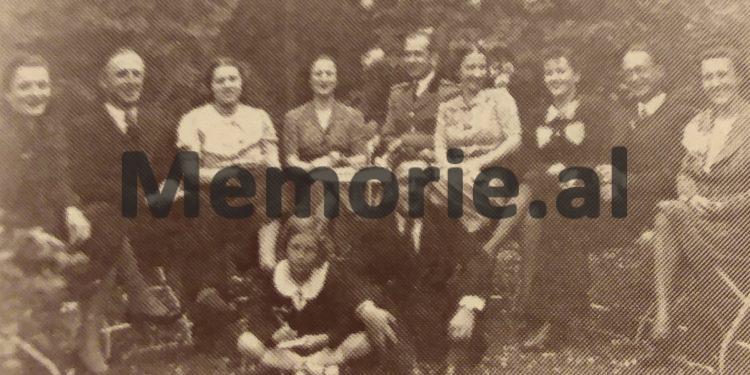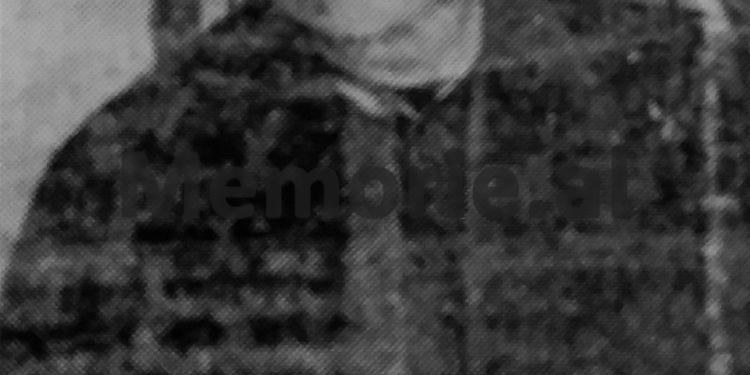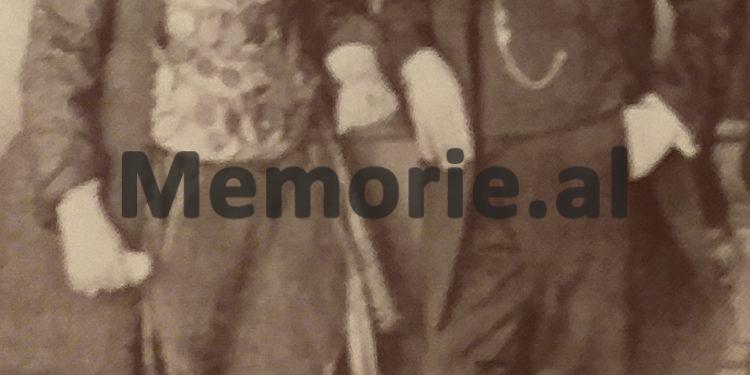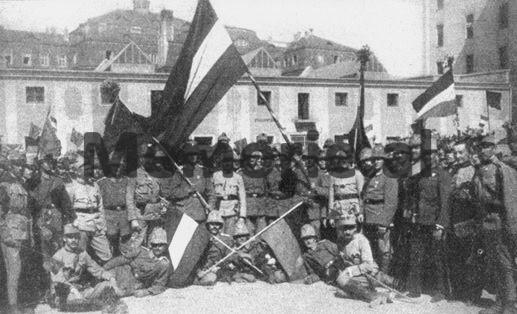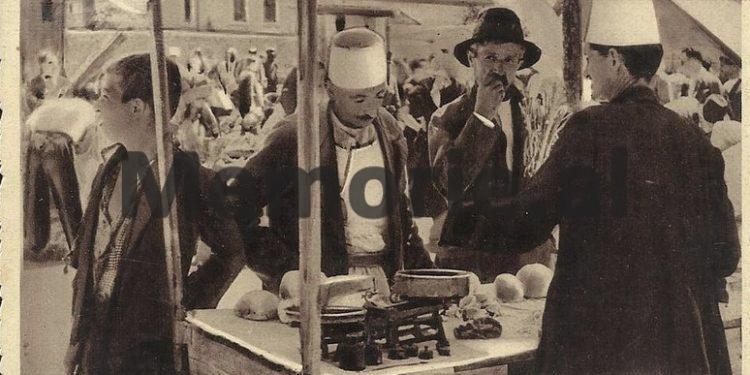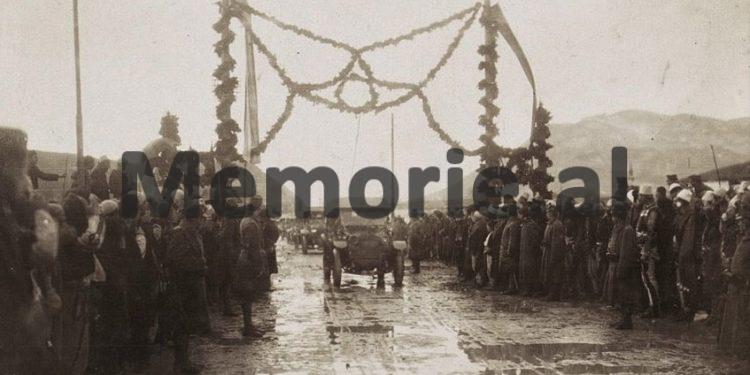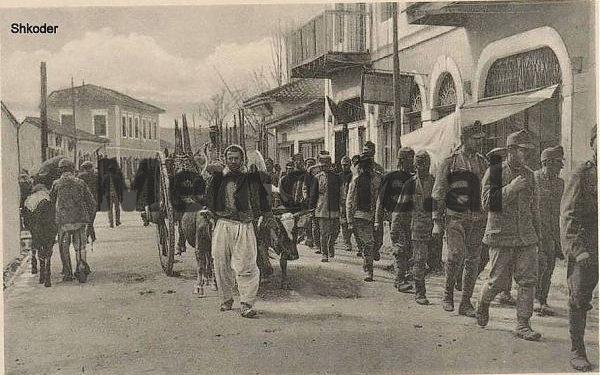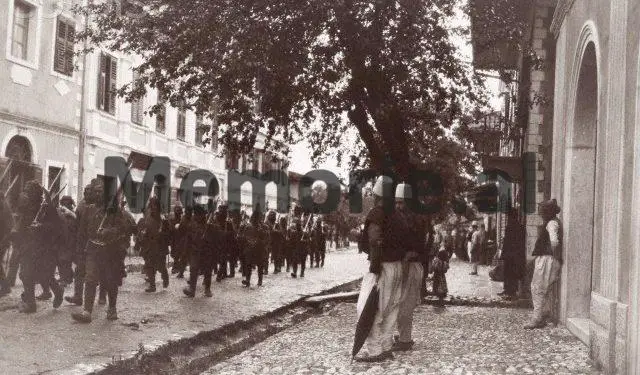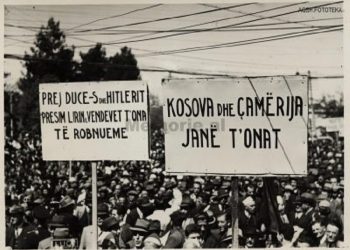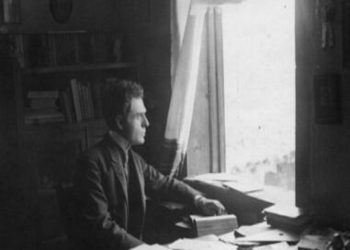Dashnor Kaloçi
Memorie.al publishes the unknown story of Stefi Ingris of Austrian origin who from 1830, after a conflict with the courtiers of the Emperor of Austria-Hungary, leaves his country to go to Palestine and the wave throws him on the coast of Shengjin, from where some people from Shkodra take it and keep it in a city inn in the Parrucë neighborhood. How Stefi settled in the city where he started a family, marrying a girl from the Shiroka tribe (with whom he had four daughters and three sons) practicing the craft of shoemaking, where he was a true master and was respected and honored by all the Shkodra residents of the Turkish Valiu of the city, who often made custom shoes to Stefi for gifts, and in 1902 when Ingris died, he sent a camp with soldiers to his funeral. One of Stefi’s three sons, Gjovalini, when his son was born in 1882, named him after his father, Stefi, who was educated in Italy in a mechanical school and later worked on a shipyard in Venice, where he stayed until when his grandfather died and he returned to the city of Shkodra, where in the first years of the last century, he founded the trade union society called “Auxiliary Society” and celebrated for the first time in the city of Shkodra the feast of May 1.
Shkodra as one of the oldest and most historic cities of Albania, for several centuries has aroused the curiosity and interest of foreigners, as well as scholars, ethnographers, chroniclers, merchants, various visitors from the Balkans, and Europe, who have received roads from their near and far places to see and enjoy it. Many of them are fascinated by the beauties, customs, traditions and traditions of that ancient city and their testimonies or memoirs are today in the archives and libraries of various European cities, such as the Vatican, Vienna, Zagreb., Budapest, Rome, etc.
One of the peculiarities of Shkodra, perhaps unique, that distinguishes it from many other cities of the country, is that of the stay of many foreigners who violated it as visitors or for other purposes and did not return to their countries. where they had come from. They settled in that city and naturalized as its inhabitants, where they raised their families and continuing life quietly through the years and their descendants continue to be in that city to this day.
One of them is the Austrian Stefi Ingrisi, or as he is otherwise known in Albanian, Shtiefën, whose nephew was called Stefi, who lived in the city of Shkodra, until 1956. But who was Shtiefën Ingrisi, under what circumstances he left his country, Austria, and how did he get to the city of Shkodra?
In this regard, we are informed in the famous Shkodra family, Daragjati, which is one of the branches of the Austrian generation Shtiefën, through paintings, photos, materials, letters, and memories that for them are not far away.
How did you get to Shkodra?
It was the winter of 1830 when the ship with which Shtifni and his two friends were traveling, had departed from the Port of Koper in Slovenia, began to sway in a storm on the Adriatic Sea. To escape this storm, the captain of the ship approached it, somewhere near the coast of Shengjin. But this was not meant to be done because the great waves, of that storm, crashed the ship near the rocks, completely destroying it. It is not known, or rather has not survived to this day, from the memory of generations of Ingriz, who were the people who sailed on this ship besides him. But one thing is certain, that Shtiefën Ingrisi, at that time was 20 years old and who was able to escape together with two of his friends. He was injured with some light scratches which were treated in a guesthouse in the Parrucë neighborhood in Shkodra. After leaving the inn, according to some testimonies, the next day Shtiefni went out to look for work in Shkodra. He had the craft of shoemaking, and in addition to a small leather suitcase, (the only one that had escaped during the sinking of the ship), where he had his work tools. Always with the help of the innkeeper, Shtiefni, he was able to rent a small shop near the town bazaar and started using it for shoe repair. From his mastery in that craft, he managed to have numerous clients, and became known throughout the city. From the first months of his work and activity in that city, Shtiefni learned the Albanian language, and quickly became acquainted with the inhabitants of this city. It is said that no one from the city of Shkodra learned the truth about his departure from Austria and his arrival in Albania. At least until the day the latter married the daughter of the tribe, Shiroka.
Why did he leave Austria?
The true story of his departure from Austria, he told as a start, his future wife, namely the daughter of the Shirokaj. This testimony of Stephen has been preserved by the descendants of that generation. In this regard, one of them named Zef Staka, (Stephen’s nephew) recalled, among other things: “Stephen lived in a village between Austria and Hungary where he often went hunting and the Emperor of Austria-Hungary himself, Franz Josef. Shortly before his departure and the people accompanying him, the inhabitants of that village were ordered to go in the direction of the forest, and with various vessels, they were to make noise. This had to be done in order to frighten the forest animals and get out of their nests to cross those paths where the Emperor had ambushed the people who accompanied him. Shtiefni felt insulted by this fact and he came before the Emperor, saying ‘We are honest people and not game animals for you and your prey’. But those words would cost him dearly, and for that reason he would have to leave his country. He left with the intention of avoiding the two empires, the Austro-Hungarian and the Ottoman, to eventually settle in Palestine. But the accidental sinking of the ship, in the Adriatic waters, would make it land in the city of Shkodra. In the months that would follow, he would meet the daughter of the Shiroka tribe, and he would crown her with marriage “, Zef Staka concluded his story. From this marriage, seven children were born, respectively four daughters and three sons, and Stephen was able to provide a not-so-bad living for his family, only by the work he did as a shoemaker, as his craft was appreciated and was highly revered in the whole city.
Shtiefni, brings the first shoe to Shkodra
According to the testimony of Zef Staka, Shtiefni brought the first shoe to this city, because before the shoes came as a model in Shkodra, the population of that city, wore a kind of slipper, called “Pashmange”. It is said that his fame in arranging shoes in Shkodra was so great that the Governor of Shkodra himself took it to his yard. According to some testimonies, when one of the diplomats finished his mission and left the city, Valiu gave him as a gift a pair of shoes, which he had ordered from Shtiefni. Likewise, according to the testimonies, when Stephen died at the age of 90, (in 1902), the ruler of the city, sent a camp with soldiers to his funeral, to honor him. According to the testimony of Angje Daragjati, who is also Shtjefni’s granddaughter, he traveled only once to his hometown. His family was shocked to see him, as they had no news that he was alive. He also told them that he had married an Albanian girl from Shiroka and that he had become a father. His four daughters were named: Katerina, Amalia, Marjeta, and Roza, who bore the names of his sisters. He also educated them with the financial and material assistance of his Austrian parents. Many of the school books that his daughters taught him are still preserved by his descendants in the city of Shkodra. Thus, Zef Staka kept in his house a German encyclopedia, with 30 volumes, which Shtiefni brought from Austria in 1870. During the period of the Zog Monarchy, also in the city of Shkodra, he had come to live and work there as a teacher., a Frenchman named Paul Guzhon, who, in his memoirs, had also written about Shtiefni, as the latter, had made a lot of impressions on the way he was arranged in this city of Albania.
Stephen’s nephew, Steph
From Shtiefni marriage to the daughter of the Shiroka tribe, in addition to daughters, three sons were born, named: Angjelin, Gjovalin, and Çesk. Gjovalin’s son was named after his grandfather Shtjefa, or as he was called for short, Stefi. He was born in Shkodra in 1882 and after finishing primary school, then went to Italy, where he attended classes at a Mechanical High School, and after graduating, he worked on a shipyard in Venice. In 1902, after the death of his grandfather, he returned to Shkodra, where he founded one of the first labor unions (union) called “Auxiliary Society”. In this context, Stef Ingrisi, organized and directed the first celebrations of May 1 in this city, going down in history as the first man to organize the workers’ day in Shkodra. He then returned to Venice, where he worked again on the shipyard. Even after so many years, in the house of Zef Staka in the neighborhood “Rus”, you can see the railings worked so skillfully by Stefi. He worked in many other countries, such as: Italy, Austria, Switzerland, Yugoslavia, etc. From the beginning of the 19th century, the influence of Austria in this city and especially in the districts of the Catholic Church, had greatly increased, causing the College of the Jesuit Fathers to be opened for the first time in Shkodra, which pleased him immensely. Stefin. He also helped many Austrian merchants living and working in Shkodra to maintain their activities. At the same time, according to some testimonies from his own family circle, Stefi, while working in Switzerland, met Vladimir Ilyich Lenin, the future leader of the Bolshevik Communist Party of Russia. Stef Ingrisi passed away in 1956 in the city of Shkodra, where many of his descendants still live today./Memorie.al




